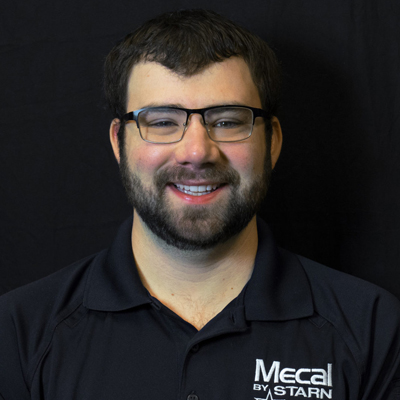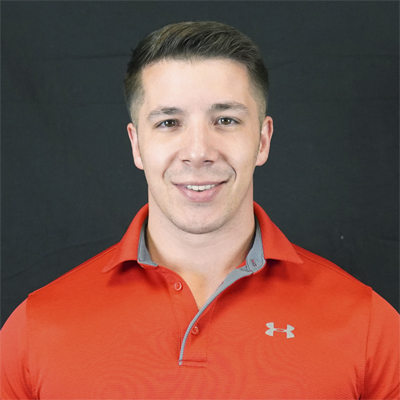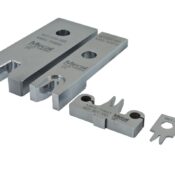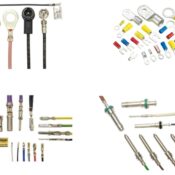Mecal News
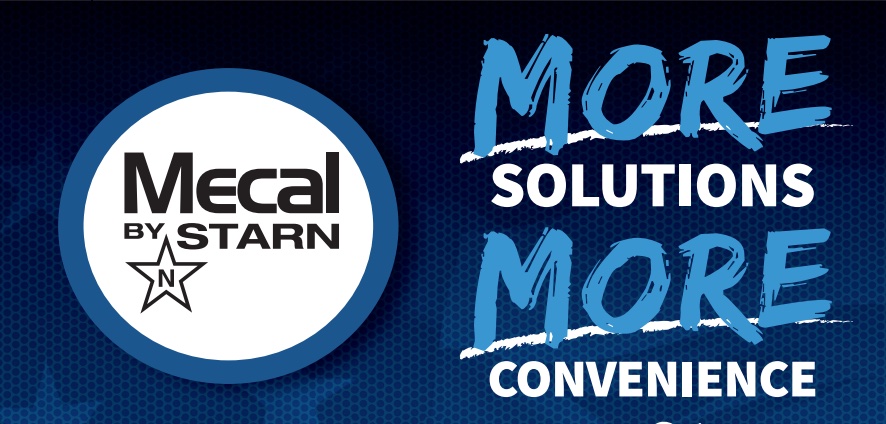
Primer in Diagnosing Crimp Applicator Issues
John Belovarac, Operations Manager at Mecal by Starn, has been running their training program for many years. WHN asked him provide us with a list of tips and recommendations useful to harness manufacturers without regard to the brand of applicator they are using. Many thanks to John for his hard work in putting together these major points:
1. Slide Adjustment - There are a group of parts that control the movement of the terminal through what we call (and I think most others as well) the slide. I call the individual component the slide, and the entire assembly the slide unit. In my opinion, the terminal should have no chance to move away from or toward the operator as they move into position over the anvils, or the exit side of the slide unit. But may have a little movement (.003" - .005") on the entrance side. Something we see commonly with applicators coming back for repair or upgrade is an excessive amount of clearance for the terminal with the guide and slide. We believe there are several possible reasons for this. One, someone has re-adjusted the guide not realizing the importance of controlling the terminals, two, terminals being supplied by the manufacturer are different (no one would admit to this though), and three, there is a belief that the pin and socket version of the terminals are the same and should fit through the applicator the same. The adjustment can be such that it can cause a pinching effect on the terminals and causes them to roll before they get to the crimping zone.
Our training empowers the operator to understand when he is faced with a situation like this and what he can do about it.
2. Feed Finger (Pawl) - The feed finger is what pushes or pulls the terminal through the slide unit and can have an effect on the repeatability of the final position of the terminals over the anvils. For your typical side feed applicators, when the feed finger moves back to engage the next terminal, it should never come out of the hole in the carrier strip. If the feed finger is allowed to move too far, and ends up resting on top of the carrier strip, it can skip over the hole and not advance the terminal. The feed finger must also be adjusted to be able to push from the center of the hole, and not forced to one side or the other.
3. Alignment of the Upper Crimp Punch with the Lower Crimp Anvil - This is very important to achieve the life expectancy of the crimping tools, and the quality of the final product. We have seen several manufacturers advocate the use of a paper or something placed over the anvils while installing the upper crimp tool. This paper creates a consistent clearance of both side of the crimp tool relative to the anvil while it is being secured into place. The Mecal applicators (not sure about any others) are intentionally made with enough clearance for the crimp tool to "float" to the proper aligned position and compensate for any manufacturing tolerances, or minor assembly errors. In the end, you can still have perfect alignment of the crimp tools.
4. Torque Specification for Screws - Years ago I had a customer ask me if we had any recommended torque specs for our screws. At that time, the answer was no, but I started to do some on the subject. Size, material and heat treatment, all play a role in the possible torque specifications. Mecal uses the highest quality screw available on the market. And we can now offer a specific torque specification for a couple of the very important screws. But short of asking all our customer to buy a torque wrench, we just teach them to make the screws about as tight as you can comfortably make them. Another important thing is that the purpose of securing something down with a screw is basically to put clamping pressure to the pieces under the screw. And you can get more clamping pressure at the same torque with a lubricant on the screw than you can with no lubricant. So we always recommend applying a little grease to all the screws.
5. Quality and Calibration of the Press - When things start to not go bad, seems the first blame is on the applicator. But in reality, the performance of the applicator is directly controlled by the quality of the press. I read a statement that the "crimp height is the closed position of the crimp tools", but this is far from the truth. The crimp tools should never touch one another. There is no such place as the closed position. Instead, they need to be driven down toward one another in a very controlled motion, stop at some very precise location before colliding with each other, generate enough force to finish the crimp, and them immediately pull away. If your press cannot do that, then you can have the best applicator in the world and it won't work right.
As stated earlier, the standard proper shut height of the press accommodating a mini-applicator is 135.8 mm (technically it’s 135.75). I’m not sure where this dimension came from, but I believe it is basically the warm fuzzy place you want to be.
Will your applicator work if your press is slightly different, yes. But any assistance we give with theoretical settings of the regulation head will not match. I actually had a customer tell me that because we stated to have a stated setting for the applicator's regulation head, that our applicator must create the proper crimp height at that setting in his press, and that he was bound to abide by our (manufacturer) recommendation. But I cannot control his press, so how can I guarantee anything? All presses flex under pressure, and they all flex differently. You may get different results when changing from press to press.
6. Crimp Height vs. Pull Force - We have done some very in depth studies to find the "optimum" pull force or tear out value, both for some customer and ourselves. When you are crimping the terminal onto the wire, you are compressing the wire to a total area something smaller than the total area of all the lose wire strands combined. We call this the compression ratio. Some think tighter is better. But it's like holding a bunch of cooked noodles in your hand - not tight enough and some may slip out...too tight and you can squeeze them to the point where they come apart in your hand. So as you are reducing your crimp height, little by little, you can watch the pull force value increase, but only to a certain point. Then the pull force will start to decrease, and it will continue to decrease as you go lower on the crimp height. In all the tests we have done, we have found the absolute peak of the pull force value to be pretty close to a 15% reduction in area of the wire. Mecal's standard for compression ratio is 17% to 24%.
7. External De-reeling Forces on the Terminal - Any automatic machine should have a de-reeling mechanism to help unwind the terminal to provide a consistent tension of the terminal as they make their way to the applicator. The applicator cannot be responsible for untangling terminals that may be caught on the reel, or on the edge of a bench. It is the function of the drag brake (friction) to put a consistent resistance on the terminal as it is fed through the applicator. Anything else will have an effect on the final position.
8. Mechanical vs. Pneumatic Applicators - We have found a huge benefit to use a pneumatic applicator over a mechanical version when using terminal that are very fragile. Our applicator has an adjustment valve that can control the speed only of the advancing terminals. You can slow them down enough to allow the operator to get the finished crimp out of the way of the incoming terminal without colliding, and you can speed them up fast enough (usually even faster) to keep up with any automatic wire processing machine. A nice subtle, gentle feed motion is always easy on the terminals. The better condition they arrive at the crimping zone, the better the results.
By John BelovaracMECAL BY STARN OFFERS
Presses ranging from 1.5 to 20 ton capabilities.
Mecal By Starn Sales
Mecal By Starn started as a partnership between Mecal and Starn Tool in order to supply North American Wire Harness Industry with world-class applicators, presses and spare parts from Mecal. Mecal was established in 1976 with the aim of supplying the wire harness industry with the best crimping equipment available. While Starn Tool, a well-respected precision machining company since 1945, has supported the wire harness industry since the 1960’s.
Today, Mecal by Starn is known for its customer service excellence across its expansive product line, as well as innovation and capability in custom-designed solutions to meet customer needs and help solve complex project challenges.
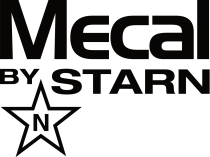
Mecal News
Meet Mauricio Valdebenito
Perishable Tooling & Reverse Engineering Solutions
A Better Option for your Production
WANT TO GET STARTED?
Talk to One of Our Experts

